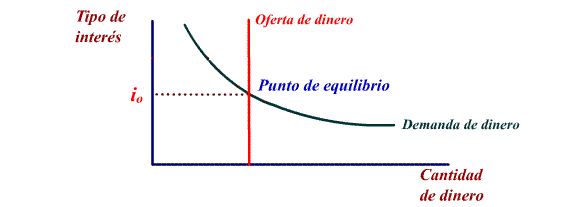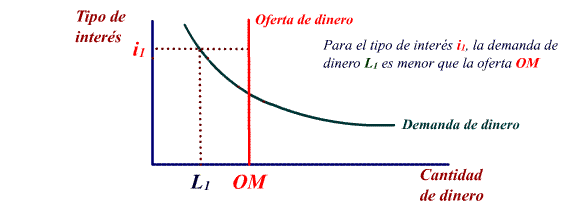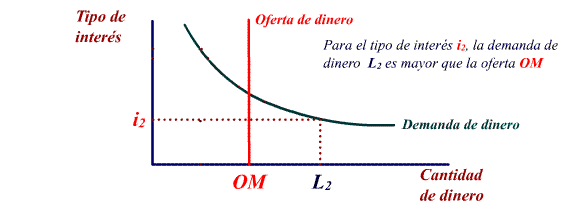POINT OF EQUILIBRIUM IN THE MONETARY MARKET
Let's suppose
that in the short term the money offer is fixed, it is a determined
quantity, therefore we can represent it as a vertical line.
The equilibrium in this
market is determined by the crossing point of the monetary demand and
the monetary offer. This point of equilibrium determines the interest
rates in the short term.


What would happen if the interest rate is
not in equilibrium?
Let's
suppose that the interest rate is higher than the balanced rate
(i 1
> i 0).
In this case the demand of money, by the citizens is less than the
offer. People want to have more liquid money (cash or in current
accounts) as the cost of opportunity is high, therefore they will
invest the excess in products of greater renumeration.
The
strong demand of these alternative products (deposits in instalments,
fixed income, etc) will make interest rates decrease (the banks
offering alternative products will not have to offer high interest
rates to attract money, as this will come naturally).

L1: The interest rate for i1, the demand for money is smaller than the L1 bid OM
Lo = OM: The interest rate drops to io, where the demand for money Lo is equal to the money supply OM
If
the interest rate is lower than the balanced rate (i 2
< i 0),
the citizens usually have more liquid money owing to the cost of
opportunity being comparatively low. The banks offering alternative
products will have to increase their interest rates to be able to place
their products.


